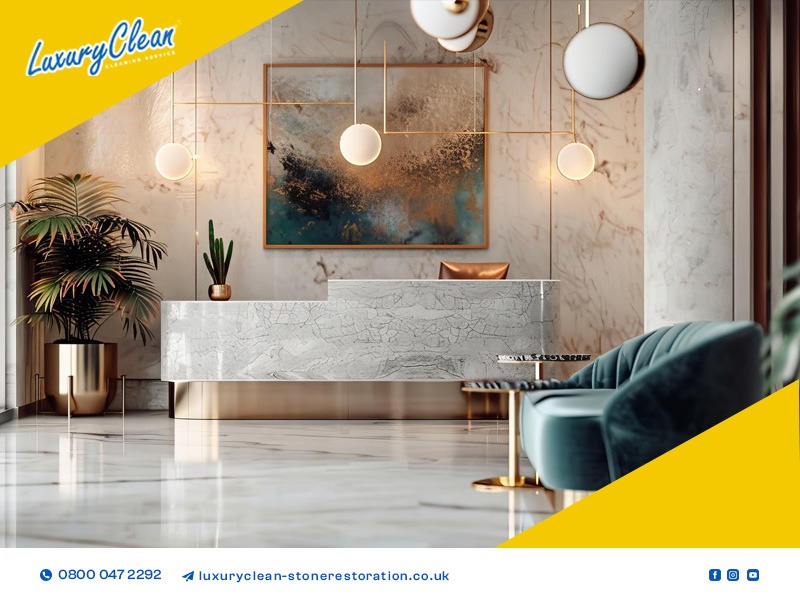Rain, exhaust fumes, and time gang up on your stonework. Between the wet winters, diesel soot from buses, and decades of city grime, your property’s stone takes a beating. You pass that grand entrance every morning, coffee in hand, probably not noticing the slow changes. But here’s the thing: catching problems early saves you serious money. Let me show you the warning signs that actually matter for stone restoration in London.
Why London’s Stonework Ages Faster
City life is rough on stone. Actually, it’s brutal. Your building gets hit with temperature swings that make stone expand and contract like an accordion. Then there’s the Underground rumbling beneath, plus acid rain that eats away at the surface year after year.
Victorian builders loved their limestone and sandstone (gorgeous stuff, but porous as a bath sponge). Water soaks right in, dragging pollution deep into the stone. Remember how your white trainers looked after a month of commuting? Same principle. London stone needs more attention than its countryside cousins; that’s just reality.
Early Signs Your Stone Needs Attention
Morning rain is brilliant for spotting stone problems; the wet surface shows everything. I tell clients to do a quick walk-around twice a year, preferably with their morning tea. Takes five minutes, honestly.
1. Tiny Cracks, Chips, and Surface Pits
Those hairline cracks near your windows? They grow faster than you’d think once water gets in. Here’s a simple test: run your hand along the edges monthly. Feels rough or gritty? Water’s already started its work. And those front steps you use daily, they’ll show damage first from all that foot traffic.
2. Fading, Stains, or Dull Patches
Look at the stone tucked under your windowsill, then compare it to the wall below. See a colour difference? That’s pollution and moisture changing your stone’s chemistry right there. Inside, marble restoration in London becomes necessary when your kitchen counters won’t shine anymore, no matter how much you polish.
3. Powdery or Flaking Texture
Try this after a few dry days: brush your hand across the stone. Getting white powder on your fingers? Bad news. The minerals holding everything together are breaking down. Or maybe you’ve spotted those crusty white deposits that appear after rain (that’s efflorescence, and it means water’s pulling salt from inside the stone).
4. Loose or Hollow-Sounding Sections
Got a 20p coin? Tap it against any suspicious spots. Good stone makes a solid click. But if it sounds hollow, like tapping cardboard instead of concrete, the stone’s come loose from its backing. Water pools in those gaps, making everything worse.
5. Mold, Green Algae, and Dark Streaks
North-facing walls get it worst. First comes a green film, then black streaks down the stone. Looks harmless enough, right? Wrong. That stuff traps moisture against the surface, and come winter, freeze-thaw cycles will crack things wide open.
Marble-Specific Red Flags
Kitchen marble tells you pretty quickly when something’s wrong, usually within six months of a problem starting. It’s fussier than outdoor stone and needs attention sooner.
- Wine glass rings that won’t disappear mean acid damage
- Yellow stains creeping up from underneath signal trapped moisture
- Can’t get that mirror shine back? The protective seal’s gone
Why does indoor marble fail faster than outdoor granite? Simple, lemon juice, wine, and even tomato sauce attack marble’s calcium directly. Granite couldn’t care less.
Where to Check First
Start where water hangs around and materials meet. You know these trouble spots already:
- Your front steps (weather plus thousands of footsteps)
- Window sills and fancy trim work (rain runs right down them)
- Bathroom floor near the shower (moisture every single day)
- Where your patio stone touches the lawn (moisture creeps up from the soil)
These spots wear out three times faster than protected areas. So problems show up there first, guaranteed.
When to Call a Professional
See cracks wider than 2mm? Find bits coming loose around decorative details? Time to call someone. And if you’re seeing multiple problems at once (like staining AND flaking), the damage goes deeper than you can handle with surface treatments.
Got a listed building or heritage property? Don’t mess about; wrong repairs can wreck historic stonework permanently. Professional stone restoration in London keeps your building sound and preserves those period details. Wait too long, and small fixes snowball into massive repairs.
Conclusion
Five-minute checks every few months, that’s all it takes to stay ahead of stone damage. Your building’s survived decades (maybe centuries) of London life. Small steps now keep it going strong. So when you spot the early signs, pitting, weird colours, that hollow tap-tap sound, you’re already doing better than most. Get marble restoration in London sorted before your surfaces lose their charm. Keep your stonework healthy, and your property keeps telling its story. After all, these old buildings are part of what makes London, well, London.


